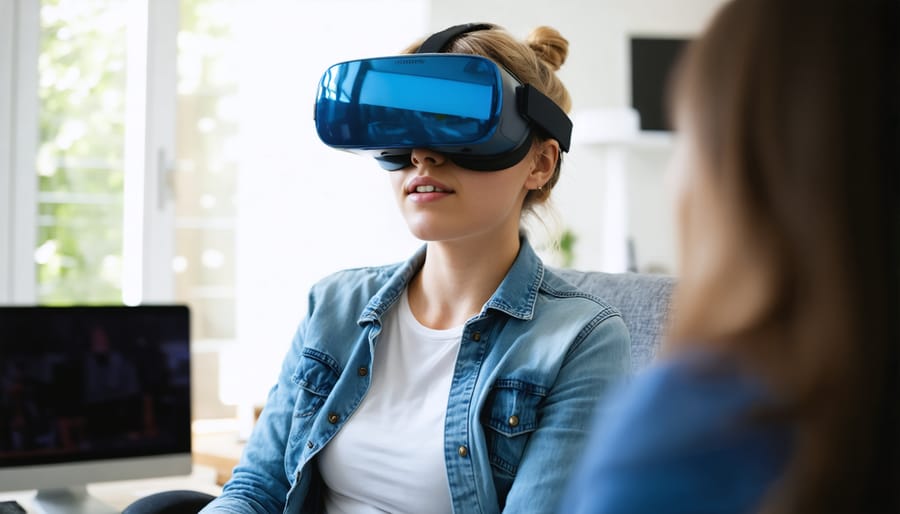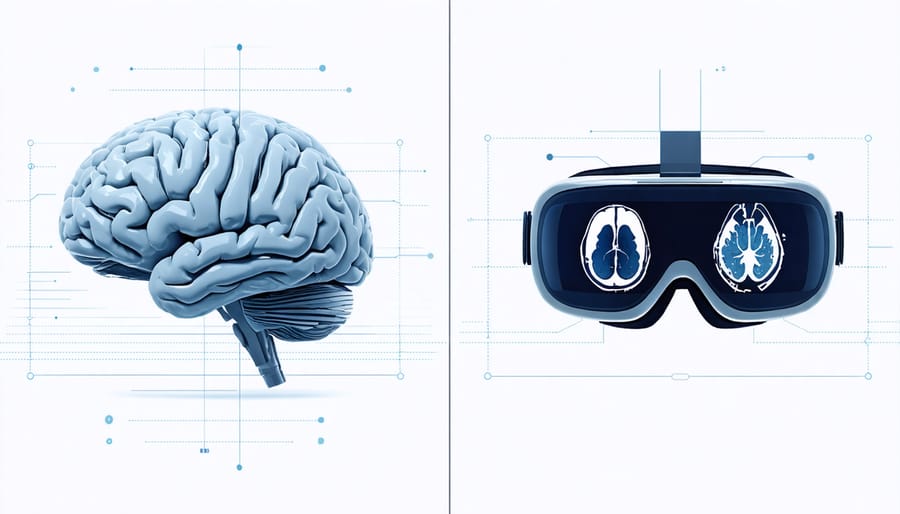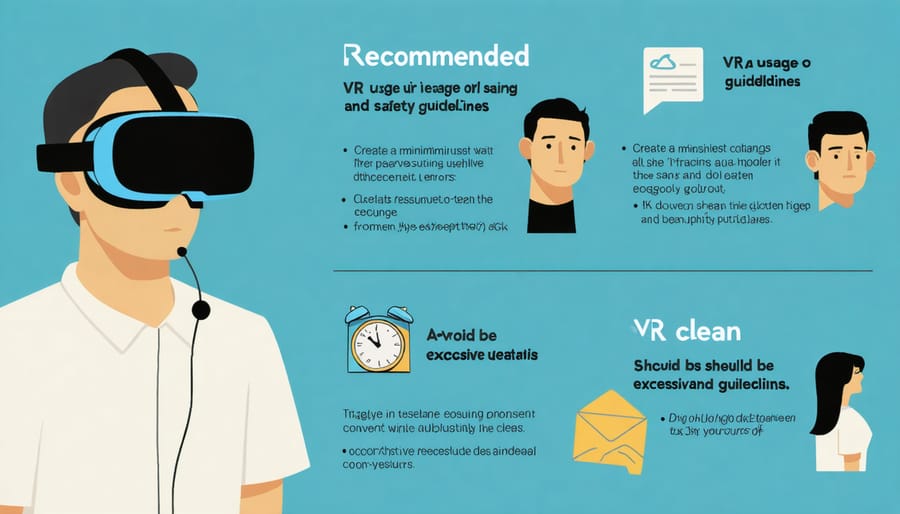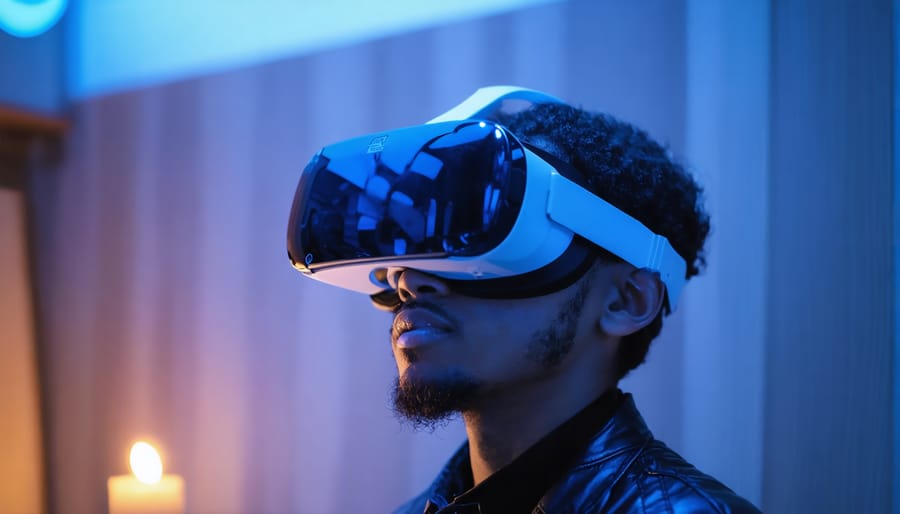Virtual reality is transforming healthcare and entertainment, but its impact on our wellbeing remains a topic of intense scientific scrutiny. As one of the fastest-growing digital mental health tools, VR technology offers immersive experiences that can both heal and potentially harm. Recent studies from leading research institutions reveal that while VR can effectively treat anxiety and PTSD, prolonged exposure may trigger physical discomfort and temporary cognitive changes in some users. Understanding these effects has become increasingly crucial as VR headsets enter millions of Canadian homes and healthcare facilities.
This balanced examination explores the latest scientific evidence on VR’s health impacts, from its promising therapeutic applications to legitimate safety concerns that deserve attention. Whether you’re considering VR for entertainment, fitness, or mental health support, knowing its effects on your physical and psychological wellbeing is essential for making informed decisions about this powerful technology.
How VR is Revolutionizing Mental Health Treatment

Common Mental Health Conditions Treated with VR
Virtual reality has emerged as a promising tool in mental health treatment, offering innovative approaches to managing various psychological conditions. For anxiety disorders, VR exposure therapy allows patients to face anxiety-triggering situations in a controlled, safe environment under professional guidance. This gradual exposure helps individuals develop coping strategies and build confidence.
PTSD treatment through VR enables veterans and trauma survivors to process their experiences by revisiting traumatic events in a therapeutic setting. The technology creates realistic yet controlled scenarios where patients can work through their trauma with their healthcare provider’s support.
For individuals with specific phobias, such as fear of heights or flying, VR provides realistic simulations that help them overcome their fears step by step. This approach has shown particularly high success rates, with many patients reporting significant improvement after several sessions.
Depression treatment using VR often incorporates mindfulness exercises and mood-enhancing environments. Patients can engage in virtual activities that promote positive emotions and practice behavioral activation techniques, which are essential components of depression recovery.
These VR-based treatments are always conducted under professional supervision and as part of a comprehensive mental health care plan, ensuring safe and effective outcomes for patients.
The Science Behind VR Therapy
Virtual reality therapy works by leveraging the powerful mind-body connection to create lasting positive changes in the brain. When patients engage in VR therapy, their brains process the virtual experiences as if they were real, triggering genuine emotional and physiological responses that can be therapeutically beneficial.
Research shows that VR activates multiple regions of the brain simultaneously, including areas responsible for memory, emotion, and learning. This multi-sensory engagement helps create new neural pathways, essentially rewiring the brain’s response to anxiety-inducing situations or traumatic memories.
The immersive nature of VR allows therapists to carefully control the intensity of exposure to triggering situations, making it easier for patients to face their fears in a safe, controlled environment. This gradual exposure helps the brain learn new, healthier response patterns while reducing the intensity of stress reactions over time.
Studies have demonstrated that these virtual experiences can lead to real-world improvements in anxiety management, pain reduction, and trauma recovery, with effects lasting well beyond the therapy sessions.

Potential Risks and Side Effects
Physical Side Effects
While virtual reality can offer incredible experiences, it’s important to be aware of potential physical side effects. The most commonly reported issue is VR motion sickness, which occurs when there’s a disconnect between what your eyes see and what your body feels. Symptoms may include dizziness, nausea, and disorientation, particularly during your first few VR sessions.
Eye strain is another consideration, as VR headsets place screens very close to your eyes. Users might experience temporary discomfort, dry eyes, or blurred vision after extended use. To minimize these effects, experts recommend taking regular 15-minute breaks every hour and ensuring proper headset adjustment.
Some users report temporary balance issues after VR sessions, which typically resolve within minutes. Neck and shoulder discomfort can also occur during lengthy sessions due to the weight of the headset and repeated head movements.
Less common but notable physical effects include:
– Temporary disruption in hand-eye coordination
– Mild headaches
– General physical fatigue
– Occasional disorientation after removing the headset
The good news is that most of these side effects are temporary and tend to decrease as your body adapts to VR technology. Following recommended usage guidelines, maintaining proper posture, and taking regular breaks can significantly reduce the risk of experiencing these physical discomforts.
Remember to start with shorter sessions and gradually increase duration as your comfort level improves. If you experience persistent symptoms, consult with a healthcare provider before continuing VR use.
Psychological Considerations
While virtual reality can offer innovative therapeutic applications and engaging entertainment experiences, it’s important to consider its psychological effects. Research suggests that extended VR sessions may temporarily impact our perception of reality and spatial awareness. Some users report experiencing a phenomenon called “VR dissociation,” where they briefly feel disconnected from their physical surroundings after removing their headset.
To protect your mental well-being while using VR, experts recommend taking regular breaks every 30 minutes and maintaining awareness of your physical environment. It’s particularly important for individuals with anxiety or panic disorders to start with shorter sessions and gradually increase duration as they become more comfortable with the technology.
Parents should monitor children’s VR usage carefully, as young minds are still developing their sense of reality and spatial perception. For teenagers and adults, being mindful of potential signs of VR-related stress, such as increased anxiety or disorientation, can help prevent negative psychological impacts.
On the positive side, when used appropriately, VR has shown promise in treating various psychological conditions, including phobias and PTSD. The key is moderation and understanding your personal comfort levels. If you experience persistent psychological discomfort after using VR, consult a healthcare professional for guidance.
Remember that everyone’s response to virtual reality is unique, and what works for one person may not work for another. By following these precautions and listening to your body’s signals, you can enjoy VR’s benefits while minimizing potential psychological risks.

Safety Guidelines and Best Practices
Who Should (and Shouldn’t) Use VR Therapy
VR therapy can be an effective tool for building mental resilience, but it’s not suitable for everyone. This innovative treatment approach is particularly beneficial for individuals dealing with specific phobias, anxiety disorders, or PTSD who are comfortable with technology and open to new therapeutic approaches.
However, certain individuals should exercise caution or avoid VR therapy altogether. These include people who experience severe motion sickness, have a history of seizures, or suffer from serious balance issues. Those with acute psychiatric conditions requiring immediate crisis intervention should seek traditional face-to-face therapy first.
The ideal candidates for VR therapy are:
– Individuals who find traditional therapy challenging
– Those who prefer a gradual approach to facing their fears
– People with specific situational anxieties
– Individuals with limited mobility who benefit from virtual experiences
Always consult with a healthcare provider before starting VR therapy to ensure it’s appropriate for your specific situation and health conditions. They can help assess whether this treatment approach aligns with your therapeutic goals and medical history.
Tips for Safe VR Therapy Sessions
To ensure a safe and effective VR therapy experience, follow these essential guidelines. Start with short 20-30 minute sessions and gradually increase duration as you become more comfortable. Take regular breaks every 15-20 minutes to prevent eye strain and dizziness. Ensure your therapy space is clear of obstacles and give yourself plenty of room to move safely.
Before each session, check that your VR equipment is properly adjusted and sanitized. The headset should fit comfortably without being too tight, and the display should be clear and properly focused. If you wear glasses, use appropriate VR lens adapters or spacers.
Listen to your body during sessions. If you experience any discomfort, nausea, or unusual symptoms, remove the headset and take a break. Stay hydrated and maintain good posture throughout your session. Consider having a trusted person nearby during initial sessions for added safety and support.
Work closely with your healthcare provider to establish appropriate session lengths and frequency. They can help adjust your treatment plan based on your individual needs and responses to VR therapy.
The Future of VR in Mental Health Care
Virtual reality is emerging as a promising tool in mental health treatment, with Canadian healthcare providers increasingly incorporating VR therapy into their practices. Research shows encouraging results for treating various conditions, including anxiety disorders, phobias, and PTSD, through controlled exposure therapy in virtual environments.
Recent studies demonstrate that VR therapy can be as effective as traditional treatment methods while offering unique advantages. Patients can face their fears in a safe, controlled setting, and therapists can customize scenarios to match each individual’s needs. For example, someone with a fear of heights can gradually work through their anxiety by experiencing virtual scenarios at different elevations.
The future of VR in mental health care looks particularly bright as technology continues to advance. Researchers are developing more sophisticated applications that can help with depression management, stress reduction, and social skills training. These developments are making mental health support more accessible, especially for people in remote areas who might struggle to access in-person therapy.
Healthcare professionals are also exploring the potential of VR for mindfulness and meditation practices, showing promising results for stress management and emotional regulation. As the technology becomes more affordable and user-friendly, it’s likely to become a standard tool in mental health care, complementing traditional therapeutic approaches.
While further research is needed to fully understand the long-term impacts, the current evidence suggests that properly supervised VR therapy can be a valuable addition to mental health treatment options.
Virtual reality therapy offers significant potential benefits for mental health treatment and rehabilitation, while also presenting some manageable risks. When used under professional guidance and with proper precautions, VR can be a powerful tool for addressing anxiety, phobias, and PTSD. The key is to approach VR therapy with informed awareness and realistic expectations.
To maximize benefits while minimizing risks, consider starting with shorter sessions and gradually increasing duration as comfort levels improve. Pay attention to your body’s signals and take breaks when needed. Always work with qualified healthcare providers who can properly assess your suitability for VR therapy and monitor your progress.
For most people, the advantages of VR therapy outweigh potential drawbacks when implemented responsibly. The technology continues to evolve, with newer devices offering improved comfort and reduced side effects. By following safety guidelines, maintaining open communication with your healthcare provider, and using VR as part of a comprehensive treatment plan, you can safely harness its therapeutic potential while protecting your physical and mental well-being.
Remember that VR therapy is one of many treatment options available, and what works best varies from person to person. Make your decision based on professional medical advice and your individual health needs.

